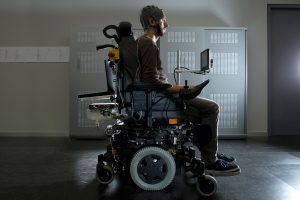Search
This monograph explores transhumanism and provides arguments to participate in what might very well be the most important debate in our history.
Technology is addictive. Carme Torras Genís (Barcelona, 1956) remarked this in one of her lectures, in which she usually warns of the need for an ethical perspective in robot design. She is a research professor at the Institute of Robotics and Industrial Informatics (a joint
Mètode's autumn issue tries to offer a general overview of the world of robotics and artificial intelligence from the point of view of six experts in the field.
The growing interaction with machines poses several questions about which we have no previous experience, nor can we reliably predict how they will influence the evolution of society.
Robotics and automation and artificial intelligence technologies hold immense potential in addressing many of the societal challenges as exemplified in the sustainable development goals of the 2030 agenda of the United Nations.
Some say that a humanoid should have a «full body» including two arms and legs, exactly like a human. This article intends to cover research on humanoid robotics in a broad manner.
Brain-computer interfaces allow the control of devices without the generation of any active motor output but directly from the decoding of the user’s brain signals.
The ultimate objective of the field of artificial intelligence (AI), the creation of a machine with a general intelligence like that of humans, is one of the most ambitious scientific goals ever set.
Mètode SSJ's monograph tries to offer a general overview of the world of robotics and artificial intelligence from the perspective of six experts on the field.
What is intelligence? In «The Measure of All Minds», José Hernández-Orallo ponders upon how we should measure human, animal, and artificial intelligence. The book tries to create connections between the evaluation of artificial intelligence, very primary at the moment, and the extensive tradition of evaluation










